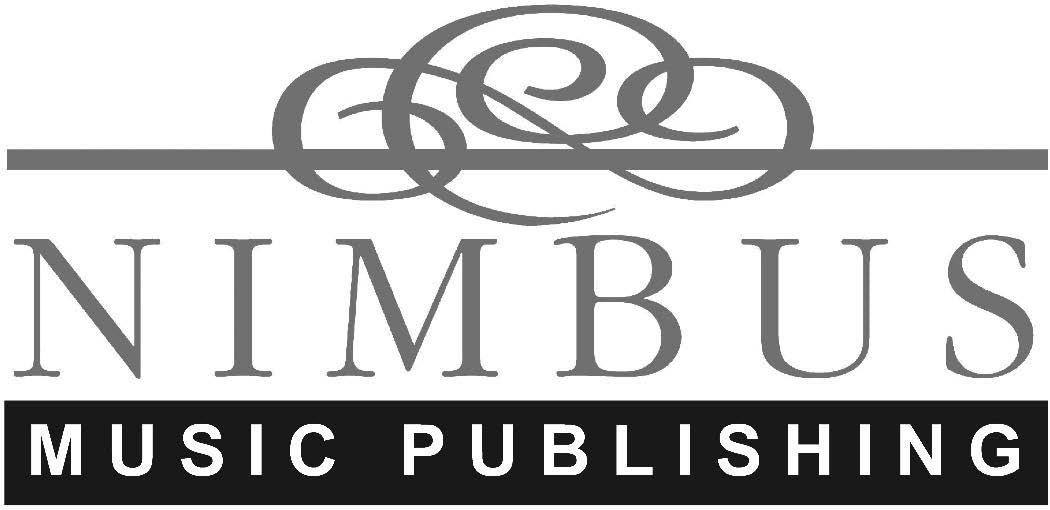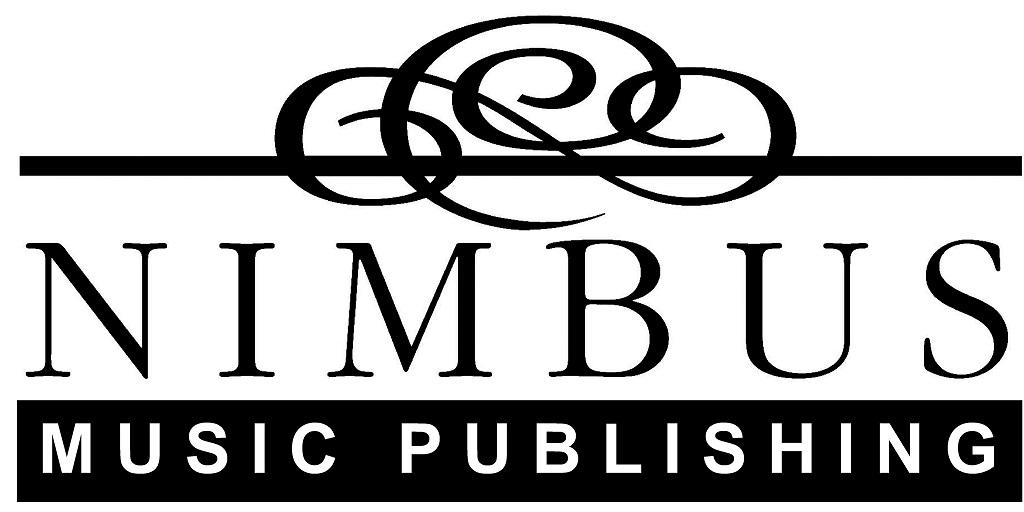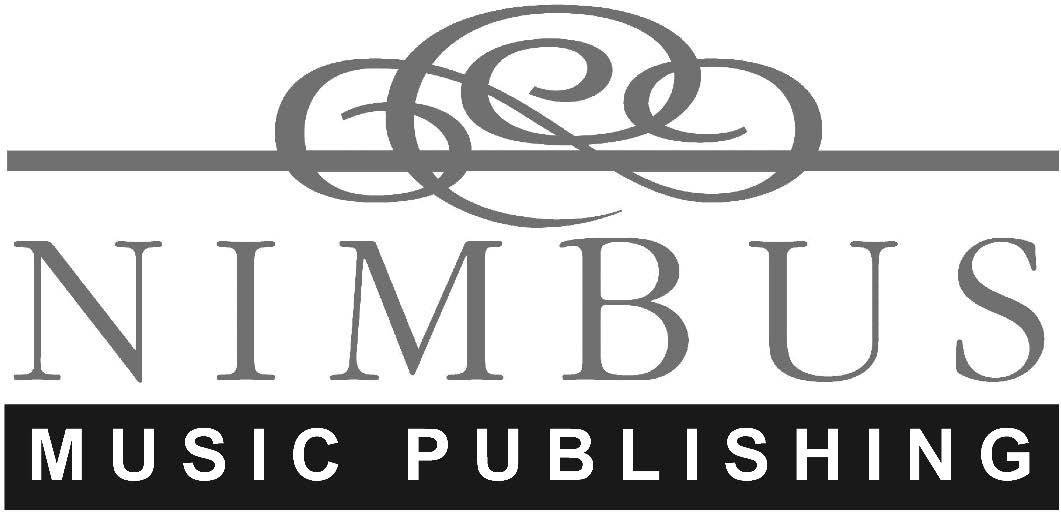

AUGUSTA READ THOMAS
Plea for Peace
vocalise for soprano & string orchestra (no basses)

Plea for Peace
6 minutes
The soloist’s elegant, wordless vocalise weaves in and out of the sustained harmonies in graceful counterpoint, drawing us closer to our common humanity. Simple harmonies slowly transform, becoming rich and complex at the insistent, dramatic climax: a wordless scream from the soul then a sonic space of meditation, reflecting on an absolute plea for lasting peace.
Short Pieces for Orchestra
Nimbus and Lyrita have published a series of shorter orchestral works by Augusta Read Thomas, Richard Blackford and George Lloyd. These Short Pieces for Orchestra (SPO) will be sold with a three-year, unlimited performance licence offering much better value for money than typical hire arrangements. Some pieces have been extracted from larger symphonic works and each is published with a descriptive name to support thematic programming and engage with the new “streaming” audience. This series supports the desire to perform, programme and introduce audiences to new repertoire for less initial cost, and allows multiple performances for no additional cost. Each kit will contain a full conductors score and one “master part” per instrument along with a licence for the ensemble to copy and perform as often as they like for the next three years. Between three and fifteen minutes SPO are perfect for opening your concert or inserting just before the interval to create a talking point.
Augusta Read Thomas PLEA FOR PEACE
(Vocalise for Soprano and String Quartet or String Orchestra–no basses)

Commissioned by The University of Chicago for the Commemoration of the 75th Anniversary of Chicago Pile-1
Dedicated with admiration and gratitude to The University of Chicago
Premiered by Jessica Aszodi, soprano, and Chicago Symphony Orchestra musicians: Yuan-Qing Yu and Ni Mei, violins; Weijing Wang, viola, and Ken Olsen, cello on December 1, 2017 in the Logan Center for the Arts at the University of Chicago
Recorded for Nimbus Records by Jessica Aszodi, Soprano, Yuan-Qing Yu and Ni Mei, Violins; WeiJing Wang, Viola; and Ken Olsen, Cello Christopher L. Willis recording engineer
SYLLABLES FOR THE VOCALISE
NOTES
The soprano should vocalize throughout using a rich, colorful, and expressive variety of syllables (ah, oh, oo), and should include humming or quasi-humming on the most quiet notes (mm, nn). The vocalise should sound overly musical, elegant, beautiful and clean throughout the whole composition. The score has suggested vocal sounds but these do not need to be strictly followed.
DYNAMICS FOR SOLOIST
The intensity and energy of loud singing should not be “spent” too early in the composition. Generally speaking, loud notes and blazing colors should be saved up and only used for the climax near the end. Often the term sotto voce is notated during the frst two thirds of the composition to indicate intimate and delicate colors and moods, which should include some humming.
VIBRATO
The composition starts and ends non vibrato. Commencing at rehearsal letter A, each musician should gradually add in vibrato on expressive and louder notes and then return to non vibrato or poco vibrato on the quieter notes. Often the quiet notes can also be played sul tasto in the strings. Some indications of vibrato and sul tasto are marked; others are left to the players’ discretion and artistry. The string players should make careful and artful decisions about matching the vibrato levels of the soloist.
BOWINGS
All bowings marked by the composer are merely general suggestions and never need to be followed.
DYNAMICS
There are only seven dynamics used in this score (niente, pp, p, mp, mf, f, ff) so that each “level” of volume has a clear meaning and sound. Often dynamics are staggered, layered and cross-faded; thus it is especially important that musicians play their individual dynamics and not be swayed to change their dynamic if someone is playing a great deal quieter or louder. The words sempre and subito are used to help clarify the layered dynamic textures.
RUBATO
Occasionally, where there are short soli, the term rubato is used and means that it is not necessary to mechanically play the exact rhythm (sextuplet, quintuplet, small triplet, etc.) but rather that one can consider those rhythms more gesturally. Rubato does not mean to drastically slow down or speed up the tempo.
SOLOIST OPTIONS
Vocalise can also be performed by fute, oboe, clarinet, muted trumpet, soprano saxophone, alto saxophone or countertenor in place of the soprano (the alto saxophone and countertenor versions are transposed a minor third lower in pitch for all players).
DANCERS OPTION
To be performed along with dancers when feasible.
Duration: 6 minutes and 30 seconds
PROGRAM NOTE BY JENNIFER IVERSON
The history of music is, in many ways, an assemblage of occasional compositions. Since the rise of art pour l’art in the nineteenth century, classical music purports to be abstract, but in the longer arc, compositions connect to specifc occasions: a coronation, a requiem mass, a religious feast, a dinner party, a regal celebration. Such occasions and commissions present challenges––not least for the composer charged with responding to the myriad consequences of the world’s frst nuclear reaction. Does one focus on the (positive) reverberations in cancer treatment, power, and science? Does one focus on the (negative) reverberations in bombs, death, waste, and perpetual threats of war? In Plea for Peace, these consequences are inextricable. The clean perfect intervals that begin and end the work give rise to both expansionist leaps and cocooning retractions. The soloist’s elegant, wordless vocalise weaves in and out of the string quartet’s sustained harmonies in graceful counterpoint, drawing us closer to our common humanity. Simple harmonies slowly transform, becoming rich and complex at the insistent, dramatic climax: a wordless scream from the soul. As the music’s opening glow returns, the voice seamlessly dovetailing with the strings, we return to the sonic space of meditation, refecting on an absolute plea for lasting peace.
Copyright
© Jennifer Iverson
ABOUT CHICAGO PILE -1
Chicago Pile-1 (CP-1), when it achieved a critical state, became the world's frst artifcial nuclear reactor. Its construction was part of the Manhattan Project, the Allied effort to create atomic bombs during World War II. It was built by the Manhattan Project's Metallurgical Laboratory at the University of Chicago, under the west viewing stands of the original Stagg Field. The frst human-made self-sustaining nuclear chain reaction was initiated in CP-1 on 2 December 1942, under the supervision of Enrico Fermi, who described the apparatus as "a crude pile of black bricks and wooden timbers".
The reactor was assembled in November 1942, by a team that included Fermi, Leo Szilard (who formulated the idea of the chain reaction), Herbert L. Anderson, Walter Zinn, Martin D. Whitaker, and George Weil. It contained 45,000 graphite blocks weighing 400 short tons (360 t) used as neutron moderators, and was fueled by 6 short tons (5.4 t) of uranium metal and 50 short tons (45 t) of uranium oxide. In the pile, some of the free neutrons produced by the natural decay of uranium were absorbed by other uranium atoms, causing nuclear fssion of those atoms, and the release of additional free neutrons. Unlike most subsequent nuclear reactors, it had no radiation shielding or cooling system as it only operated at very low power. The shape of the pile was intended to be roughly spherical, but as work proceeded, Fermi calculated that critical mass could be achieved without fnishing the entire pile as planned.
In 1943, CP-1 was moved to Red Gate Woods, and reconfgured to become Chicago Pile-2 (CP-2). There, it was operated until 1954, when it was dismantled and buried. The stands at Stagg Field were demolished in August 1957, but the site is now a National Historic Landmark.
THOUGHTS BY SEAN KELLER
When the Chicago Pile-1 went critical on December 2, 1942, a coded call from UChicago to Harvard merely said, “the Italian Navigator has just landed in the New World, [and] the earth was not as large as he had estimated….” Humanity had breached a monumental threshold underneath the deeply ordinary stands of the University of Chicago’s Stagg Field, passing into an age that would fundamentally alter the terms of our existence—and yet did so almost unexpectedly, before the pile’s stack of graphite blocks and uranium cylinders was even complete. As we approach the 75th anniversary of CP-1, we must recall the vast and enduring consequences that fowed from this somewhat crude and unstable material moment: although the frst artifcial, self-sustaining nuclear chain reaction produced only enough energy to light an incandescent bulb, the incommensurable scale of the research that followed from this experiment reshaped the world through innovations in agriculture, medicine, and nuclear power, while at the same time inaugurating the possibility of man-made extinction.
Copyright © Sean Keller
PLEA FOR PEACE
(Vocalise for Soprano and String Quartet or String Orchestra–no basses) Commissioned by The University
Augusta Read Thomas (2017)
Crystalline and transparent; rubato sempre q = 63–68 Tempo can fuctuate and should be led by singer/performer of the vocalise line

*Please vocalize freely throughout using a variety of syllables: ah, oh, oo, etc. Include humming or quasi-humming on the most quiet notes: mm, nn, etc. The vocalise should sound overly musical, elegant, beautiful and clean throughout the whole composition.
Soprano
Violin 2
Viola
Violoncello
Violin 1






end

Enter when Soprano has about four more beats of air left in her lungs.
NMP1133 Fanfare of Hope and Solidarity, Augusta Read Thomas (4:00)
Majestic, optimistic, blazing, and passionate, yet, in the centre of the piece, a robust expressive an eloquent lyrical passage unfolds a range of emotions. The composition ends as if reaching skyward - affirming and hopeful – as bells’ resonance hangs in the air like sunlight ripples.
NMP1171 Sunburst, a fanfare for Orchestra, Augusta Read Thomas (7:00)
Celebratory and Optimistic. A flash of sunlight through a break in clouds. Rays diverging from a central point like the sun. Ideal for a youth, community or college orchestra requiring very small percussion.
NMP1026 Plea for Peace, for Soprano and String Orchestra, Augusta Read Thomas (6:00)
The soloist’s elegant, wordless vocalise weaves in and out of the sustained harmonies in graceful counterpoint, drawing us closer to our common humanity. Simple harmonies slowly transform, becoming rich and complex at the insistent, dramatic climax: a wordless scream from the soul then a sonic space of meditation, reflecting on an absolute plea for lasting peace.
NMP1266 Plea for Peace, for Soprano and Wind Ensemble, Augusta Read Thomas (6:00)
The soloist’s elegant, wordless vocalise weaves in and out of the sustained harmonies in graceful counterpoint, drawing us closer to our common humanity. Simple harmonies slowly transform, becoming rich and complex at the insistent, dramatic climax: a wordless scream from the soul then a sonic space of meditation, reflecting on an absolute plea for lasting peace.
NMP1077 Canticle of Winter for soprano saxophone & string orchestra, Richard Blackford (7:00)
The sense of restlessness, of something unresolved, despite the beauty of the winter landscape, permeates the music. Soft, sustained and melancholic, is contrasted with rhythmic string writing against exuberant flurries and plangent sound of the soprano saxophone that evokes a traveller’s journey through the winter night. Inspired by Robert Frost’s poem Stopping by Woods on a Snowy Evening: The woods are lovely, dark and deep, But I have promises to keep, And miles to go before I sleep…,
NMP1008 Spirited, an aspirational overture, Richard Blackford (6:00)
A sense of hushed anticipation and excitement, a trumpet presents a heroic theme, punctuated by ricochet timpani. A solo horn plays the main theme of aspiration which is taken up by violins before bringing us back to the heroic trumpet and bright, dancing violin.
NMP1255 Clarissa’s Tango for violin and String orchestra, Richard Blackford (4:00)
The violin and orchestra capture the sound and essence of Tango creating an evocative dance between the instruments. The violin has leads with a short, cadenza-like introduction while the orchestra guides their interplay with exciting riffs. An ebullient duet making virtuoso demands on the violin with high tessitura passages and multi-stops to fast passages of the tango melody.
NMP1006 The Better Angels of Our Nature, for oboe and String orchestra, Richard Blackford (15:00)
Abraham Lincoln’s inaugural address on March 4th 1861 is theme for this short concerto for oboe and strings. Divided into two continuous movements, separated by Taps, the bugle call played for funerals or at sunset. “We must not be enemies. Though passion may have strained, it must not break our bonds of affection. The mystic chords of memory will swell when again touched, as surely they will be, by the better angels of our nature.”
NMP1267 Glory - Movement III La Sagrada Família Symphony, Richard Blackford (8:00)
The Glory Façade is the temple’s most important and exudes an aura of mystery, awe, and majesty. The Lord’s Prayer appears in fifty languages on the Eucharist door, with Catalan shining out in polished bronze. The opening horn solo quotes the Gregorian Credo plainsong (No.6), the music appears suspended in time, without pulse, giving a sense of music in different tempi. The coda re-affirms the Credo motifs over a sustained pedal note, now in sharp focus, before resolving finally in a blaze of sound.
NMP1268 Aquarium - Movement 7, Carnival of the Animals orchestrated by Richard Blackford (3:00)
Orchestrating Carnival of the Animals for symphony orchestra provided an opportunity to re-interpret Saint-Saens magical score with new colours and no pianos! The sensuous, full textures of soft muted brass, cascading harp, gurgling woodwind, made each movement a delight to animate.
SRMP0138 An Arctic Stillness from Symphony No. 4 ‘The Arctic’ II Lento tranquillo, George Lloyd (13:00)
A glacial coldness from the strings punctuated by warmer solos from oboe and clarinet. The strings expand the texture but without breaking the sombre mood. A brighter character with rustling strings supporting woodwind solos leads to a soulful melody where the role of strings and woodwind is reversed, arriving at a climactic cadence from the timpani. The opening mood of stillness returns.
SRMP0139 Day and Night in the City from Symphony No. 4 ‘The Arctic’ III Allegro scherzando George Lloyd (14:00)
Elements of Berlioz and a straightforward ABA structure. After the opening bustle there is an adagio contrast where the string and woodwind groups gently duet with each other. Waking to life again, the opening material returns and is interrupted by a short chorale before closing with a tutti restatement of the opening themes.
SRMP0140 Hall of Mirrors from Charade ‘Scenes from the 60s’ II LSD, George Lloyd (7:00)
Echoes of Debussy and Delius. A haunting, or perhaps haunted trip; the composer’s original title for the piece, written in the swinging 1960s, was simply LSD. It is a short energising overture, orchestrated with great skill, an appetiser.
SRMP0141 Comedy of Manners from Charade ‘Scenes from the 60s’ III March-In, George Lloyd (4:00)
First class light music, where a circus atmosphere meets farce. A nonchalant, brisk march.
SRMP0142 Flying Saucers from Charade ‘Scenes from the 60s’ IV Flying Saucers, George Lloyd (6:00)
A light scherzo, poking gentle fun at the sky-watchers of the mid-twentieth century who saw aliens behind every cloud. The dramatic, dissonant passage near the end conjures up images of an extra-terrestrial encounter, yet the whimsical closing bars suggest there is no cause for alarm.
SRMP0143 Politics and Pomp from Charade ‘Scenes from the 60s’ VI Party Politics, George Lloyd (4:00)
Two political parties are talking at us in a light moto-perpetuo scherzo. Self-important ideas are introduced on the lower strings and woodwind while the mock-heroic and cartoonish thoughts are ushered in by flutes and clarinets. Both themes are inflated, truncated, and gleefully distorted, inspiring colourful and inventive orchestration. In the closing section both parties gang up on us as the two tunes merge harmoniously together’. Gently satirical, cheerfully irreverent.
For more information contact: www.wyastone.co.uk publishing@wyastone.co.uk


